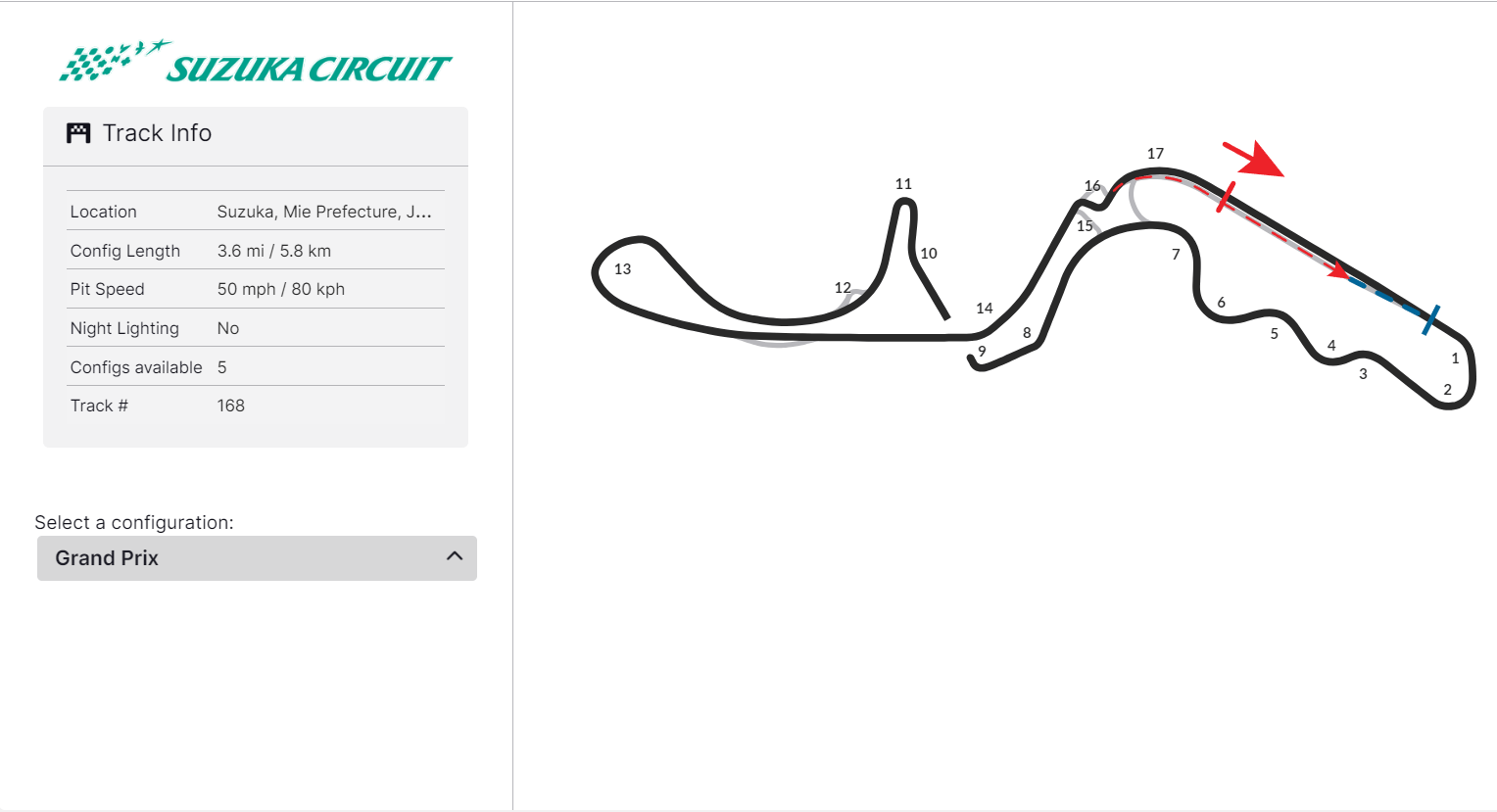The History of Japan Suzuka International Racing Course and iRacing
Buckle up racing fans, because we’re about to take a thrilling journey through the history of one of the most iconic race tracks in the world – Suzuka International Racing Course. From its origins as a dream of Honda’s founder Soichiro Honda, to its modern-day status as a mecca for motorsports enthusiasts, Suzuka has seen it all.
But now, thanks to the virtual world of iRacing, this legendary track is being brought to life like never before. So, let’s rev our engines and discover the exciting transition of Suzuka from asphalt to virtual in iRacing.
The Birth of Suzuka International Racing Course
The Suzuka International Racing Course was born from the ambitious vision of Honda’s founder, Soichiro Honda. In 1962, he commissioned Dutch track designer, John Hugenholtz, to create a circuit that would challenge the skills of top drivers while testing the endurance and performance of Honda’s motor vehicles. The result was a figure-eight layout, a pioneering design choice at the time, offering a diverse range of corners and straights, high-speed sections, and drastic elevation changes.
Its complex configuration made it not unique among the world’s race tracks, but also one of the most challenging. Its distinctive layout and demanding nature quickly attracted the attention of international racing communities.
By its completion in 1963, Suzuka was the first full-fledged race course in Japan, breaking new ground in the nation’s motorsport scene. As it began hosting various motorsport events, from the Formula One Grand Prix to the Motorcycle Grand Prix, Suzuka quickly became synonymous with high-stakes, heart-pounding racing action. Thus, the Suzuka International Racing Course was born, a testament to Soichiro Honda’s passion for motorsport and his unrelenting pursuit of excellence.
Suzuka’s Place in Motorsport History
As the first full-scale racetrack in Japan, Suzuka swiftly carved its niche in the world of motorsports. Its challenging design and thrilling races caught the eyes of the international racing community, and soon Suzuka was drawing in some of the biggest names in racing.
In 1987, Suzuka had the honor of hosting the Japanese Formula One Grand Prix, which put it firmly on the map as one of the top racing circuits globally. This race marked the beginning of a long-standing tradition, with Suzuka continuing to host the Japanese Grand Prix for most years since then.
Legends such as Ayrton Senna and Michael Schumacher have battled it out on Suzuka’s asphalt, adding to the track’s prestige and allure. Suzuka has also been the theater for many memorable moments in motorsport history. The infamous collision between Alain Prost and Ayrton Senna during the 1989 and 1990 Japanese Grands Prix is still hotly debated among fans.
And who can forget Kimi Raikkonen’s incredible drive from 17th to 1st in the 2005 Grand Prix, cementing his status as one of the greatest drivers of his generation? Not limited to car racing, Suzuka has also been a fixture in motorcycle racing, hosting the Motorcycle Grand Prix and becoming a favored circuit in the endurance world with its 8-hour Endurance Race.
The Rise of iRacing and Virtual Motorsport
As the new millennium rolled in, the digital age started revving its engine, leading to the advent of virtual motorsport and iRacing. Initially dismissed as merely ‘video games,’ these simulators soon started gaining recognition for their meticulous attention to detail and realistic physics. The launch of iRacing in 2008 marked a significant milestone in the evolution of digital motorsport.
Developed by motorsport simulations veterans and engineered from the ground up as a centralized racing and competition service, iRacing took the motorsport world by storm. The platform offered an unprecedented level of accuracy in its depiction of real-world tracks and cars, making it a valuable tool for professional drivers and teams for training and preparation.
But it wasn’t just the pros who were captivated; the thrill of virtual racing captured the hearts of armchair racers and motorsport enthusiasts alike. With the rise of eSports and increased accessibility to quality racing hardware, iRacing’s popularity soared, leading to a new era of motorsport where the virtual and real worlds began to merge. This digital revolution was about to take Suzuka on an exciting new journey.
Suzuka’s Digital Transformation in iRacing
In 2012, Suzuka made its grand entry into the virtual world through iRacing. The track’s digital transformation was a painstaking process involving meticulous accuracy and attention to detail. The iRacing team used laser scanning technology to capture every inch of the 5.8-kilometer track.
Every bump, every curb, every apex was replicated with high precision, creating a virtual Suzuka that was almost indistinguishable from the real one. The result was a digital playground that offered racers the opportunity to take on the notorious 130R and Casio Triangle from the comfort of their homes. But the virtual Suzuka was more than a playground.
It quickly became a tool for aspiring racers, offering them a chance to practice and perfect their skills on one of the most challenging circuits in the world. Pro drivers also found value in the virtual Suzuka, using it as a simulator to prepare for real races.
As word of Suzuka’s digital doppelgänger spread, it soon drew in legions of gamers and motorsport enthusiasts from around the world. Whether it was competitive online races, time attack challenges, or just casual racing with friends, Suzuka’s virtual version provided a thrilling motorsport experience to all who dared to take it on.
And the best part? The heart-pounding thrill of speeding down Suzuka’s straights and navigating its tight corners was no longer restricted to professional racers. With iRacing, Suzuka’s iconic asphalt became accessible to anyone, anywhere in the world, blurring the line between virtual and real racing like never before.
Looking into the Future of Suzuka and iRacing
As we cruise into the future, the bond between Suzuka and iRacing only promises to strengthen. Advancements in virtual reality and simulation technology will continue to enhance the virtual racing experience, bringing fans closer to the visceral thrill of the track than ever before.
Imagine strapping on a VR headset and feeling every pulse-pounding second as you whip around the Casio Triangle, or going toe-to-toe with the world’s best racers in hyper-realistic, global eSports tournaments.
For Suzuka, the future is not just about maintaining its status as a legendary track, but also about innovating and evolving with the times. And with iRacing leading the charge in digital motorsport, the future looks bright. It’s not hard to envision a time when new motorsport legends will be born not just on the asphalt of Suzuka, but in the virtual world, as well.
As the boundaries between the physical and digital continue to blur, one thing remains certain: the spirit of competition, the love of motorsport, and the thrill of the race – these are the things that will forever define the enduring legacy of Suzuka, whether on the asphalt or in the pixels of iRacing.





